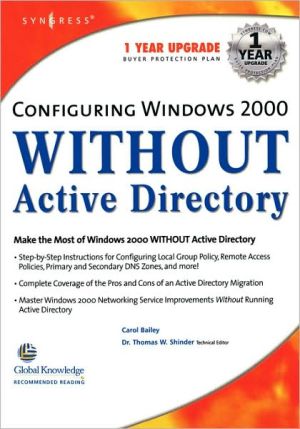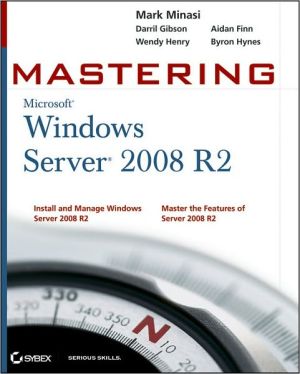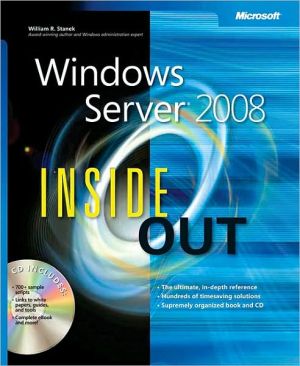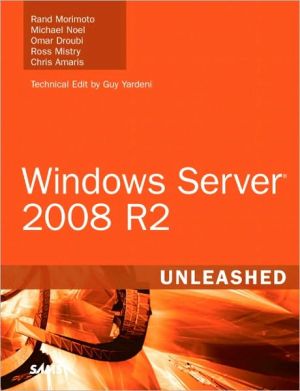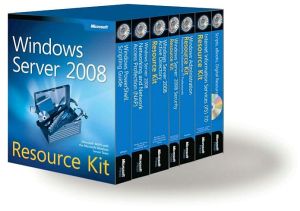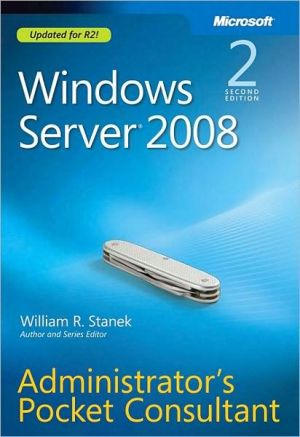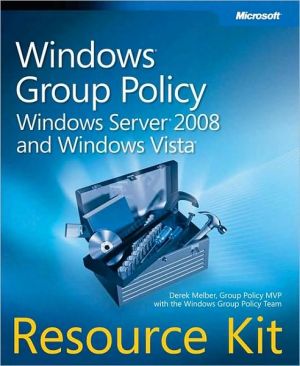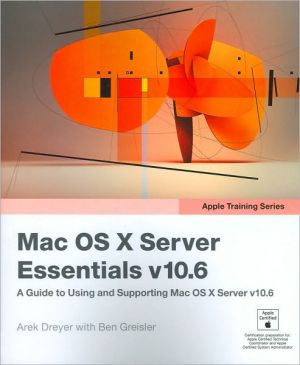Configuring Windows 2000 Without Active Directory
Eliminate the hassles of Active Directory - install Windows 2000 without it!\ Windows 2000 is undoubtedly a great product. In one year after its release, Microsoft have sold have sold 10 million licenses. System administrators are praising its impressive abilities to coordinate Internet, intranet, extranets, and management applications creating a complete technical infrastructure. However, there has been a noticeable amount of organizations that are avoiding one of the most talked about...
Search in google:
Active Directory (AD) is complex and invasive, and as a result many IT professionals struggle with comprehensive Windows 2000 deployments that are contingent upon AD. Configuring Windows 2000 WITHOUT Active Directory is about making the most of those Windows 2000 features and services that can be used independently of AD whether in an existing NT4 domain environment, Novell s NDS, UNIX, or even in a standalone workgroup.
Why Use Windows 2000? \ Before we begin answering this first question, we might take it back one more step and ask ourselves why use a Microsoft operating system computer at all? Despite the accolades of alternative platforms, it has to be recognized that no computer system (hardware or software) is 100 percent perfect. You may have personal preferences based on experience and knowledge—and therefore you have to decide which operating system best fits your requirements.\ The Acceptance of Windows into the Corporate Workplace In this context of no computer system is perfect, many corporations decided on Microsoft operating systems because they offer an easy-to-use interface. This factor alone substantially reduces costs for both end-user training and network administration. It also makes recruiting staff easier simply because there’s a better choice and greater availability of people in the marketplace with varying degrees of experience with and competence in this operating system.\ Additionally, Windows comes from an established company, is widely available, is widely supported by the industry, and offers solutions within the budgeting requirements of most companies and even individuals with home networks. True, there are cheaper alternatives—but the overall cost of a computer is more than the cost of its initial hardware and operating system. These days we are more aware of Total Cost of Ownership (TCO), which takes into account factors such as ease of installation, ease of use and maintenance, choice of hardware, choice of drivers and packages, and availability of training material, qualified staff, and vendor support, among other considerations.\ It is also true that there are alternative platforms that can boast a history of offering better security and reliability, but at the cost of lack of flexibility, less support for third-party drivers and applications, more extensive training requirements, and higher recruiting costs. Taking the whole equation into account, it’s no wonder that many corporations today include Microsoft operating systems on both workstations and servers.\ The Acceptance of Microsoft in the Corporate Workplace This book isn’t about the question of whether to use Microsoft systemst, but instead a realization that Microsoft systems do exist in the workplace and will continue to do so for the foreseeable future. In fact, I would guess that the majority of people reading this book will not even have a choice of which operating system to use. For every IT Manager with the power to make this decision, the majority inherit the choices of their predecessors and know it is unrealistic to replace a working system with an alternative (unless there are exceptional circumstances). And for every IT Manager with the authority to make that choice, there are many more people working in the IT industry who simply do not have that decision to make. Their job is to implement and support the current and past choices of other people. Corporate networks are built on historical decisions and politics rather than purely technical choice.\ \ The Emergence of Windows 2000\ Microsoft spent more than three years on improving Windows NT 4.0 and Windows 9x before finally releasing its next version, which it decided to call Windows 2000. And for all the current marketing about Windows XP, Windows 2002, and .NET, these too will be built on today’s standard Windows 2000 technologies.
Chapter 1 Why Not Active Directory? Chapter 2 Workstations Chapter 3 Laptops Chapter 4 File and Print Services Chapter 5 Terminal Services Chapter 6 Networking Services Chapter 7 Internet Services Chapter 8 Secure Communication Chapter 9 Remote Access Chapter 10 Internet Connectivity
